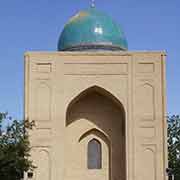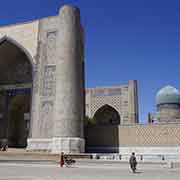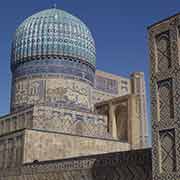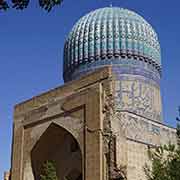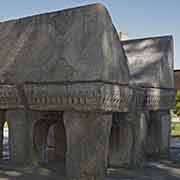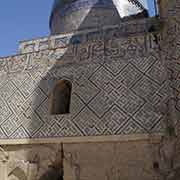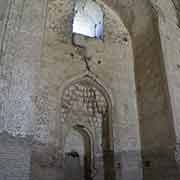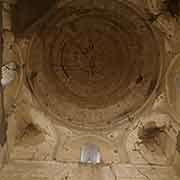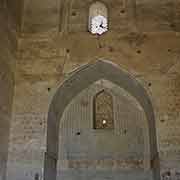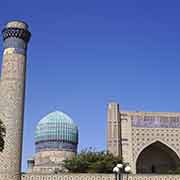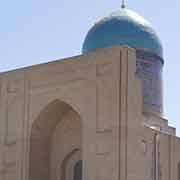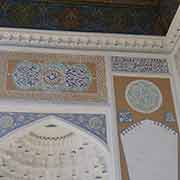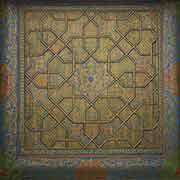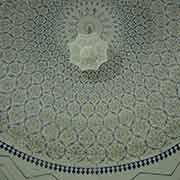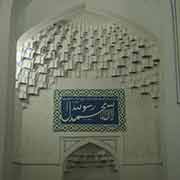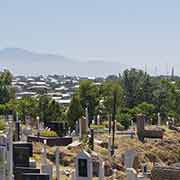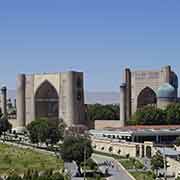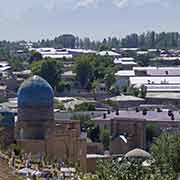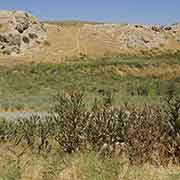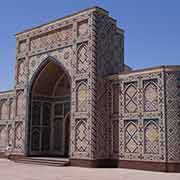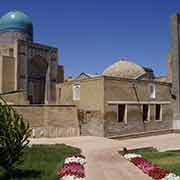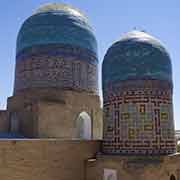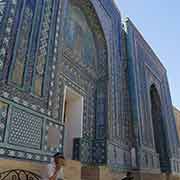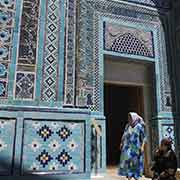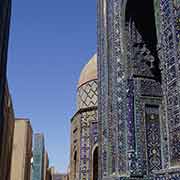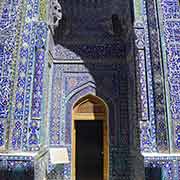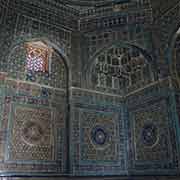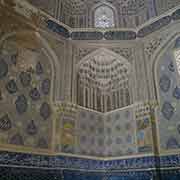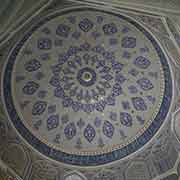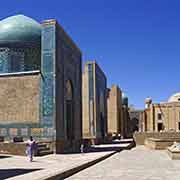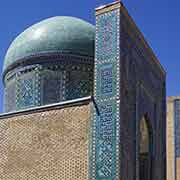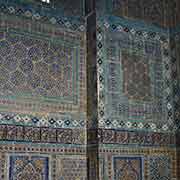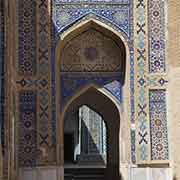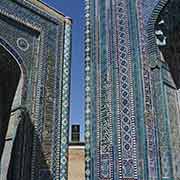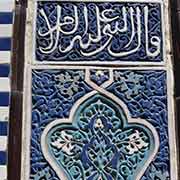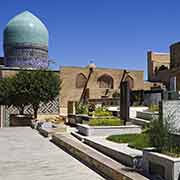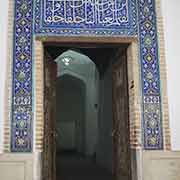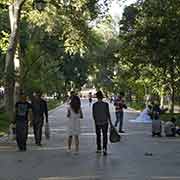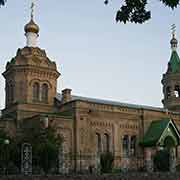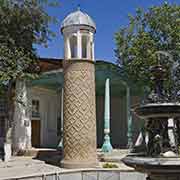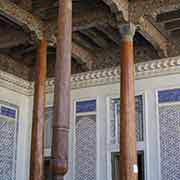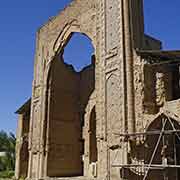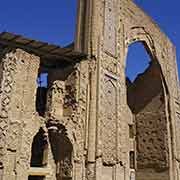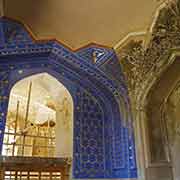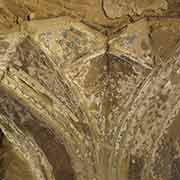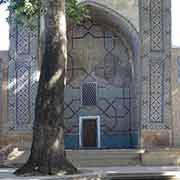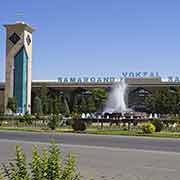Photos of Samarkand: towards the outskirts, Uzbekistan
Samarkand: towards the outskirts
Just to the north east of the famous Registan is the Bibi-Khanym mosque; in the 15th century this was one of the largest and most magnificent mosques in the Islamic world, with a vast 35 metres high parade portal and blue-glazed cupolas. It had been constructed by Timur after his conquest of India in 1399. By the mid-20th century only a grandiose ruin of it still survived, but now major parts of the mosque have been restored. Across the street is the mausoleum of Bibi-Khanym (Bibi Xonum), the oldest wife of Timur, after whom the huge mosque was named.
you may then send it as a postcard if you wish.
On a hill to the entrance of the city is the Hazrat Khizr Mosque, the first mosque constructed in Samarkand following the Arab conquest of the region. Beyond that is the Shah-i-Zinda Ensemble, a cemetery site with many ornately decorated, colourful tombs and ancient mosaic-tiled mausoleums. Further on is Afrasiyab, the oldest part and the ruined site of the ancient and medieval city of Samarkand. Not far from there, on the banks of the Siob River, is what is claimed to be the tomb of the Old Testament Prophet Daniel: a long, low structure topped with five domes, containing an 18 metre sarcophagus – legend has it that his body grew by half an inch a year and thus the sarcophagus had to be enlarged. Part of his remains, which date to at least the 5th century BCE, were brought here by Timur during his seven-year campaign in Asia Minor (1397-1404), from Susa, Iran. There is also the Ulugh Beg Observatory, built in the 1420s by the Timur's grandson, ruler and astronomer Ulugh Beg and considered by scholars to have been one of the finest observatories in the Islamic world. There are old mosques and mausoleums, like the crumbled Ishratkhana Mausoleum, that is now being restored and bright new decorations painted inside.
To the west of the old city is the new area the Russians built after their conquest in 1864. Here is the St. Aleksyi Russian Orthodox Church and the Navoi Park with its wide foot paths; a large statue of Timur sits at the northern end of it.



